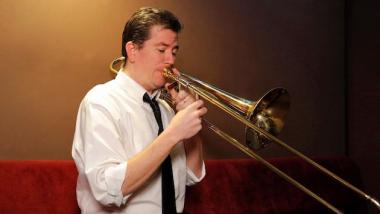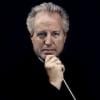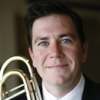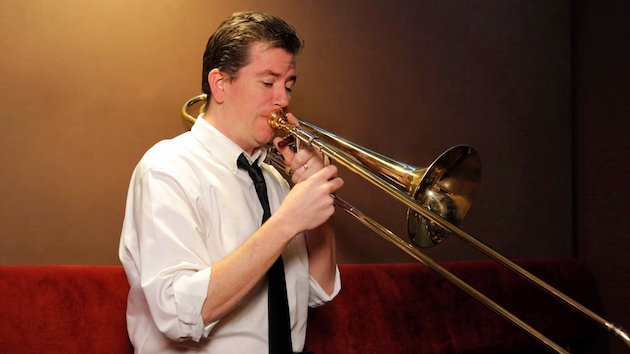
You can dream of a white Christmas in San Francisco, but you’re not likely to hear bells on a sleigh or see any snow. What you have been able to depend on is the Holiday Brass of the San Francisco Symphony (SFS), who’ll be there at Davies for their annual convocation this Sunday, Dec. 15, at 8 p.m. Principal trombonist Tim Higgins testifies that, “We all look forward to it, for months ahead of time, because it’s great to be able to do an entire program on our own, the way we want to.”
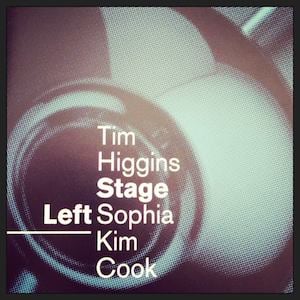
A native of Spring, Texas, Higgins, now 37, took to trombone by default, when there were no flutes left for him to play in the school band. He followed the larger instrument to a bachelor’s degree in music performance from Northwestern University. He went on to numerous festivals including Aspen and Tanglewood (where he received the Grace B. Upton Award for Outstanding Fellow) and to engagements with the Chicago Symphony, the New York Philharmonic, the Baltimore Symphony, and other ensembles. Before joining the SFS in 2008, he was acting second trombonist for the National Symphony Orchestra.
Higgins pursues a parallel career as a composer and arranger for the SFS and several brass configurations, including the National Brass Ensemble. He teaches at the San Francisco Conservatory of Music and has held master classes around the world. His solo CD, Stage Left, is available from his website, 415-music.com. Higgins spoke with SFCV from his Richmond District home, which he shares with his wife, actress and singer Sharon Rietkerk.
Other than not sharing the space with legions of strings and other instruments, what do you brass make different about this holiday show?
We’re much more responsible for keeping the pace and the tone of the pieces going, in a different manner. It gives us opportunities to play string parts and woodwind parts. We’re obviously more accompaniment-al in orchestral concerts, with the occasional solo and occasional melody. Which we love doing.
Will you be also be functioning as percussion in the Holiday Brass show?
No, we do have percussionists come in. We’re going to take advantage of [principal percussionist] Jake Nissly’s trap set skills, we’re going to play pieces that will put him in his jazz element.
Which pieces?
I’ve done an arrangement of Duke Ellington’s Nutcracker Suite, his own take on Tchaikovsky. It’s a little different from his, because there’s no saxophones and it’s not a full rhythm section.
Do you have any others of your arrangements on the program?
I arranged the Corelli Christmas Concerto. I actually started off arranging back at Northwestern and got into composing later.
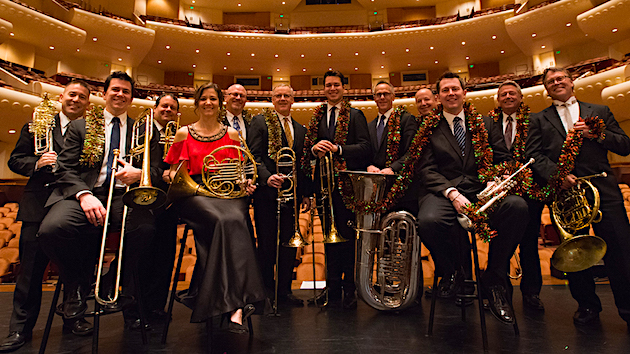
What were your influences as composer and arranger?
I grew up going to the Catholic church, and I saw the relation music had to church, so obviously Bach came to the forefront. As brass players, we study chorales, so there’s an automatic lyricism to my music. And I’m a huge fan of Shostakovich, the way he uses harmony and constructs melodies is incredibly clever. I think the fact that I’m a wind player affects how I write: I don’t write very long melodies, everything’s kind of related to something much more conversational.
Does something about the trombone in particular work in that mode?
The trombone sits in a register which is pretty close to the average male voice, and the slide, which can play in between the notes in a way other brass instruments can’t, is closer to the human voice than are our valved counterparts.
And yet, isn’t classical repertory for the trombone relatively meager?
Yes, I see a need to get high-quality, expressive art written for our instrument, and I try to take that on as much as I can. Violin and cello have too much repertoire for anybody’s lifetime; they’ve very lucky.
Did things get better for you classical trombonists as the 20th century led into the 21st?
You had a lot of soloists who showed up and started recording and touring with orchestras. Probably the most popular was Christian Lindberg, a Swede, and Alain Trudel, from Canada, though they both moved on to conducting, and Lindberg is a composer. Joe Alessi, with the New York Philharmonic, is soloing as much as he can, and a lot of people write concertos for him. And it’s fun to see which composers have gotten on board to write for us. A great example, who just passed, is Christopher Rouse; his Concerto for Trombone won the Pulitzer in 1993.
In the SFS’s profile video, you spoke about looking out for techniques you’d want to borrow from other trombonists. What have you gotten from Alessi and anyone else?
I can move air very aggressively and get a bright sound, or I can move air slowly and get a warm sound. So I would watch how Joe moves a high volume of air warmly, which is very difficult to do. My teacher, Michael Mulcahy from the Chicago Symphony, could play with a sound like honey coming out of his bell. By listening and watching how he moved his air and held his body while he played, I tried to get as close to that sound as I could.
So it’s more than just mouth and lungs.
There’s a specific way to play where some muscles are engaged and others are relaxed, and you need to know when you need to be tense and when you should be relaxed and allow air to flow to the instrument. And every person’s a little different.
Does it take orchestras a particularly long time to find good trombonists?
The issue with no-hire auditions has more to do with the process than with the particular instrument. It’s a tall order for players of any instrument to perform in a very artificial performance environment at a very high level that convinces an entire committee that this is the person. There are very good players who don’t have ‘that’ day, and we all have been there.
If you can modestly step outside yourself, what about your audition convinced the SFS?
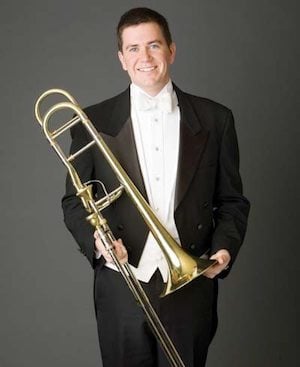
I think I showed a lot of character in my playing, and that I played in a way that showed I knew the music. I knew more than just my part; I knew the tradition and the style and what needed to happen in an orchestra that plays the way they do, which is very big, very expressive. I managed to show them that without sitting in the orchestra, though part of my audition was playing excerpts with the brass section, and another part was playing for about half an hour with the orchestra. And there I showed them that I’d know when I need to lead and when I need to follow, and I’d know how to play in a way that makes the people around me sound as good as they can sound. And I came through.
Congratulations!
It was a big relief when it was done, that’s for sure.
Your video and bio revealed you as a marathon runner. Does that help your playing?
I don’t think it has a huge effect on my lung power, but it helps me mentally to have a place where I’m not connecting to some device, I’m not listening to anything, I’m out in nature doing something very primal. It’s my therapy session, and I can come back refreshed and go to work.
Any upcoming marathons? Or compositions?
I was supposed to run a marathon, but was not able to stay on my training path because of travel. I don’t have anything now scheduled for performance, but I have a commission from Music City Brass, in Nashville. I wrote them a concerto grosso a couple of years ago and right afterwards they asked me to write another piece, so I’m writing a symphony, scored for a very large brass section. I’m in talks with the National Brass Ensemble about whether we’ll commission, and I’ve told them about my current piece and whether we can include it down the line. There are other talks I have with my colleagues here at work; some of them have asked whether I’ll write them a piece.
So we might hear something by you in an SFS season?
Are you kidding me, I would love that! I did a piece last season [March 2019] in one of the chamber concerts, called I Am Matteo. It was a letter from a young boy who came to one of our family concerts. He said, “My name is Matteo Musso, I’m 13, I have autism, I came to your concert, and here’s what I heard.” And then he wrote just this unbelievable poetry about the piece. I happened to see it printed out, just lying on a desk backstage, and I said, “would you mind if I set this to music,” and they said, “go for it.” So I wrote a chamber piece that set his words to music, and we brought him back into the hall for the chamber concert. [Sharon Rietkerk, the composer’s wife, was the vocalist.] So I’m up for composing anything, and if you want to talk to the Symphony and request something, I’ll buy you a beer.
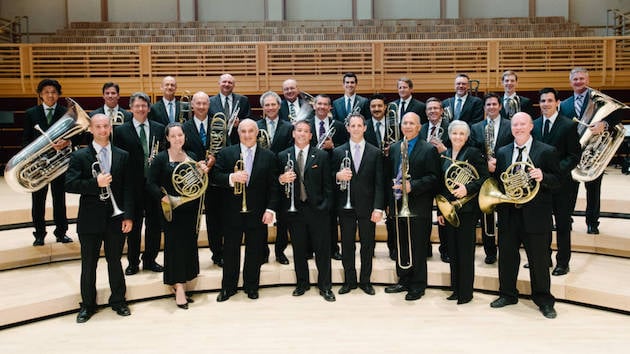
Maybe instead you should offer me one of those cocktails which you’re showcasing in your video.
I became interested in cocktails and the craft of making them when I moved out here and began experiencing the cocktail scene, which is one of the best. At home I started trying out recipes and eventually I found a few that worked. It’s great to have colleagues over and make something they’ll enjoy.
Do particular players like particular potions?
Absolutely. Jake Nissly loves an Aviation, and I’ve learned to adjust the recipe to the way he likes it. One of our horn players is a big fan of gin, but he likes to experiment, so he’s up for whatever combinations I come up with. Others in the brass section just want straight scotch.
Did you ever design something for the Maestro?
I talked with [SFS president] Sako about coming up with a drink for Michael, and she said, go for it. So I came up with the MTTini; I think it was vodka, sweet vermouth (but clear, the Dolin Blanc), and a dash of crème de violette. It was good!
How did he take it?
I never got to make it for him! But there was one day when Yo-Yo Ma was rehearsing in the building, and the orchestra asked me to make him a Negroni. I chased around with the Negroni trying to find him, and then we took a photo with him.
How was this Negroni different?
I made mine with Aperol instead of Campari, because Campari is like putting a clown car in your cocktail.
Will you be ready for Esa-Pekka Salonen?
In our little brass section, we’ve been joking about getting a bottle of Akvavit and learning how to make cocktails with it. We know he enjoys a good Pilsner, and there are a couple of guys — Paul Welcomer, our second trombone player, and Mark Wright, in our bass section — they’re fantastic brewers, and I go out and brew with them on occasion. They’ll be brewing for Esa-Pekka when he gets here.
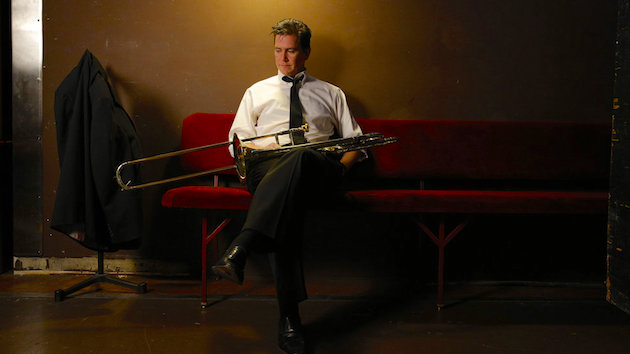
What else will you be serving up in the Holiday Brass concert?
It’s a little different in that it’s not all Christmas music, but really great, well-written pieces for brass that fit the occasion. For example: the first piece is by James Beckel, who’s the principal trombonist with the Indianapolis Symphony, a fantastic piece called Musica Mobilis which is festive and upbeat, but modern and clever. The piece which ends the first half is three movements of Bruce Broughton’s brass ensemble Fanfares, Marches, Hymns & Finale. For the second half, the opener is Joan Tower’s Fanfare for the Uncommon Woman, a great opportunity for a great brass fanfare by a major composer and for music written by a female composer.
Are you tricking out your holiday perennials?
There’s a surprise with our Sleigh Ride [by Leroy Anderson] which we shouldn’t put in print. But we’ll make it memorable!

